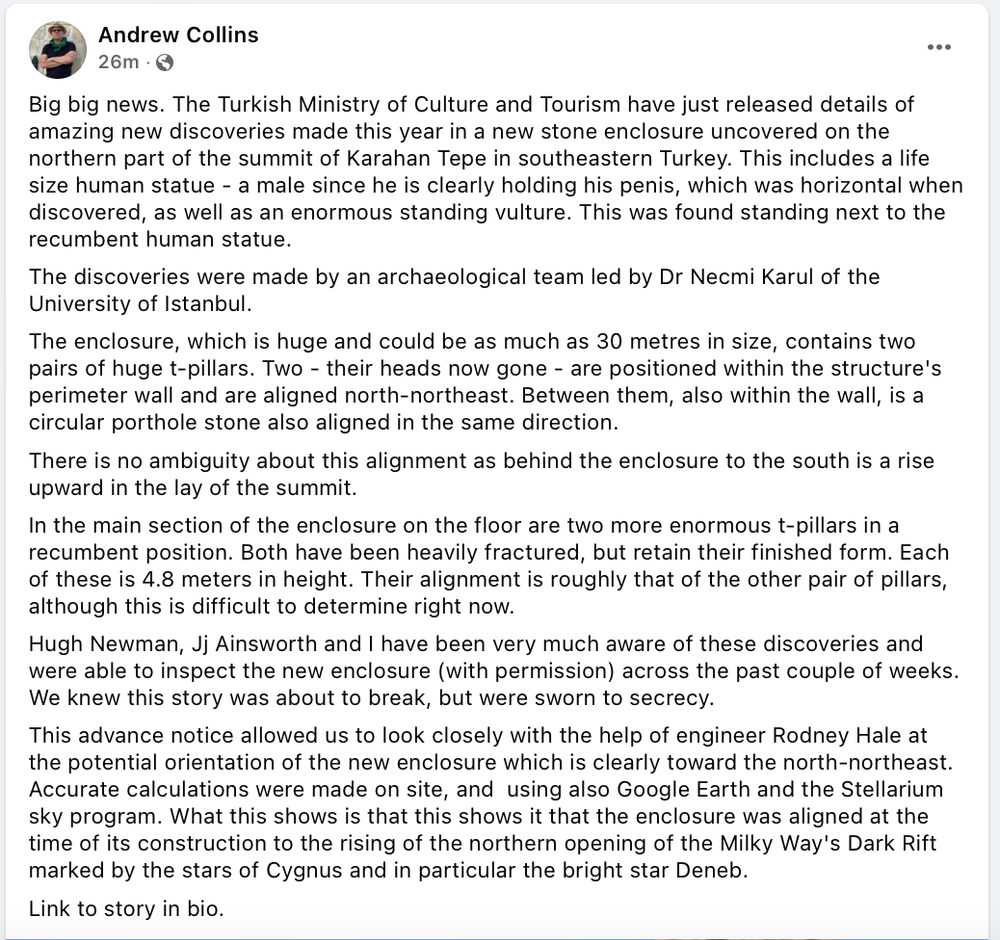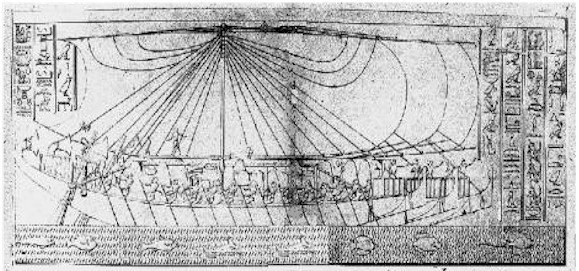BLOG #23 – Evidence for Egyptian dark initiation sites in Templar Portugal.
Having written earlier on the strong possibility that the great Pyramid complexes of Ancient Egypt were used to initiate the Pharaohs (http://www.awhico.com/blog/2018/2/12/initiation-venues-in-ancient-egypt-pyramid-complexes), it is fascinating to travel through Portugal looking at Knight Templar sites and the presence of caves and darkened rooms in their constructions. Afonso Henriques the 1st king of Portugal played a key role in the Christian Reconquista in Portugal to push the Muslim Moors from the Iberian Peninsula. He departed from Coimbra with 250 of his best knights in the conquest of Santarém. His success there laid the basis for the conquest of Lisbon in 1147 where forces loyal to him pushed the Moors out of the Castle above Sintra. The castle surrendered voluntarily to Christian forces which included the newly formed Knights Templar. Figure 1. Author standing with a statue of Afonso Henriques, the 1st king of Portugal, at the Castelo de S. Jorge, Lisbon, Portugal. On his shield is a Templar Cross. Soon after this victory, Afonso Henriques, donated various houses and estates in the center of Sintra to the master of the Knights Templar, Dom Gualdim Pais, between 1157 and 1158. They took over the Moorish Castle, the remains of which still sit on a hilltop overlooking Sintra. Its commanding view of the coastal plain, ocean and entrance to the Targus River with its access to Lisbon and inland made it an important defensive site. Figure 2. The Moorish Castle above Sintra, Portugal. The Sintra area is littered with caves. In the centre of town beside the National Palace is an area with many caves under the existing cafes, bars and restaurants. Although they are now blocked off from access, they have been visited in the present time and continue to be surrounded by Templar icons in the ancient and modern constructions. Figure 3. Modern day bar named for the underlying caves in downtown Sintra. Dom Gualdim Pais founded the Castle of Tomar in 1160, then near the frontier with the Muslim states. Tomar is a small town 150 km/100 miles to the northwest of Sintra. It would have been close to the front lines between the new Portuguese nation and the Muslims who still controlled the south below the Targus River and its tributaries. Figure 4. Castelo de Tomar above downtown Tomar, Portugal. In 1190 Abu Yusuf Yaqub al-Mansur, an Almohad caliph, and his army attacked Tomar. However the knights and their 72-year-old leader, Gualdim Pais, kept them at bay. When the Templars were disbanded in 1312, King Denis of Portugal provided them refuge and welcomed them in 1319. To insulate them from prosecution by the Kings of Europe and the Pope in Rome, their name was changed to the Military Order of Christ/Ordem Militar de Cristo. At that time The Templars finished the church of Santa Maria de La Olivia on the east shore of the river. The Church is the resting place for many of the early Grand Masters. It has Templar iconography in its windows, carvings and st
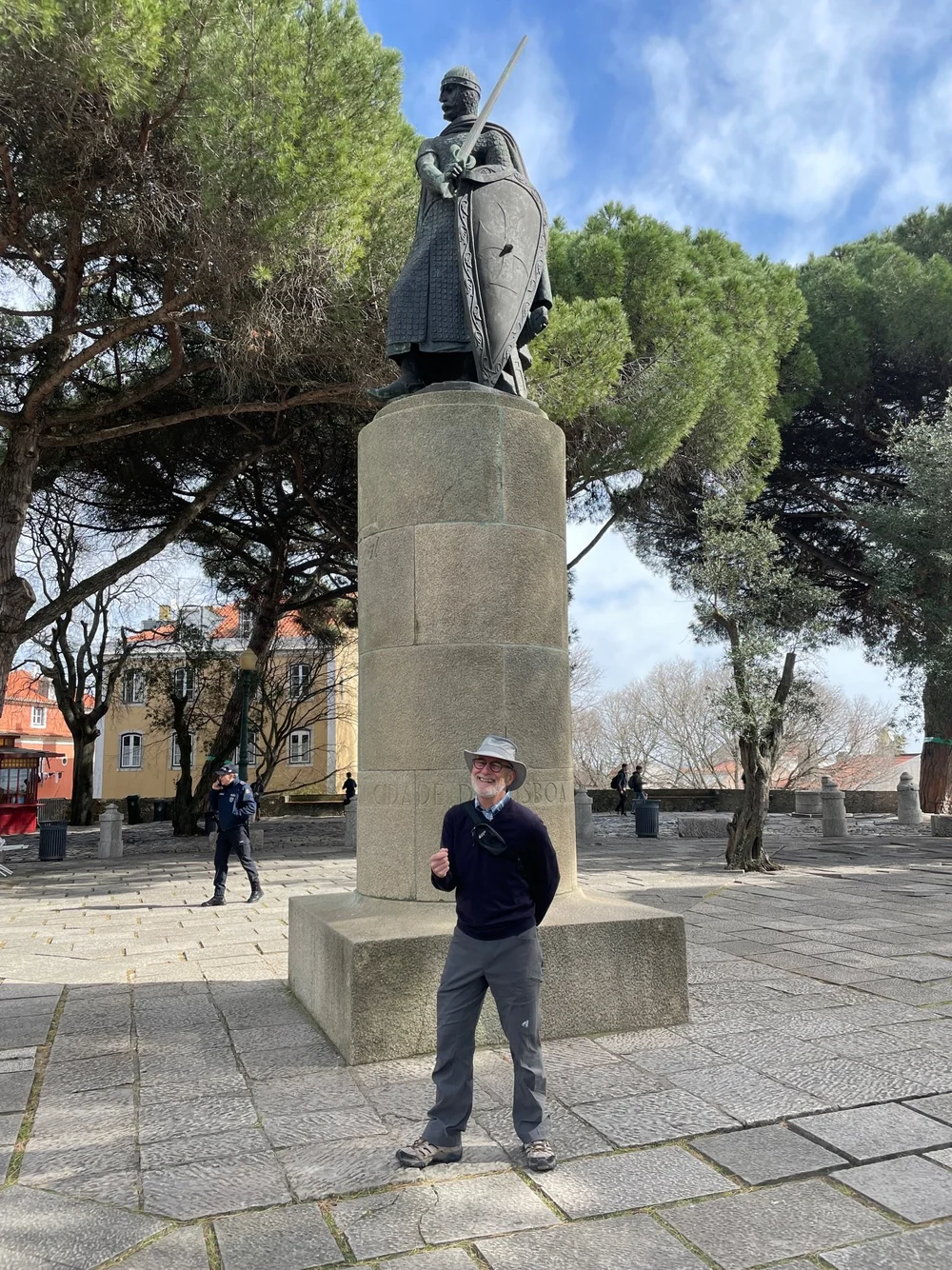
Having written earlier on the strong possibility that the great Pyramid complexes of Ancient Egypt were used to initiate the Pharaohs (http://www.awhico.com/blog/2018/2/12/initiation-venues-in-ancient-egypt-pyramid-complexes), it is fascinating to travel through Portugal looking at Knight Templar sites and the presence of caves and darkened rooms in their constructions.
Afonso Henriques the 1st king of Portugal played a key role in the Christian Reconquista in Portugal to push the Muslim Moors from the Iberian Peninsula. He departed from Coimbra with 250 of his best knights in the conquest of Santarém. His success there laid the basis for the conquest of Lisbon in 1147 where forces loyal to him pushed the Moors out of the Castle above Sintra. The castle surrendered voluntarily to Christian forces which included the newly formed Knights Templar.
Figure 1. Author standing with a statue of Afonso Henriques, the 1st king of Portugal, at the Castelo de S. Jorge, Lisbon, Portugal. On his shield is a Templar Cross.

Soon after this victory, Afonso Henriques, donated various houses and estates in the center of Sintra to the master of the Knights Templar, Dom Gualdim Pais, between 1157 and 1158.
They took over the Moorish Castle, the remains of which still sit on a hilltop overlooking Sintra. Its commanding view of the coastal plain, ocean and entrance to the Targus River with its access to Lisbon and inland made it an important defensive site.
Figure 2. The Moorish Castle above Sintra, Portugal.

The Sintra area is littered with caves. In the centre of town beside the National Palace is an area with many caves under the existing cafes, bars and restaurants. Although they are now blocked off from access, they have been visited in the present time and continue to be surrounded by Templar icons in the ancient and modern constructions.
Figure 3. Modern day bar named for the underlying caves in downtown Sintra.
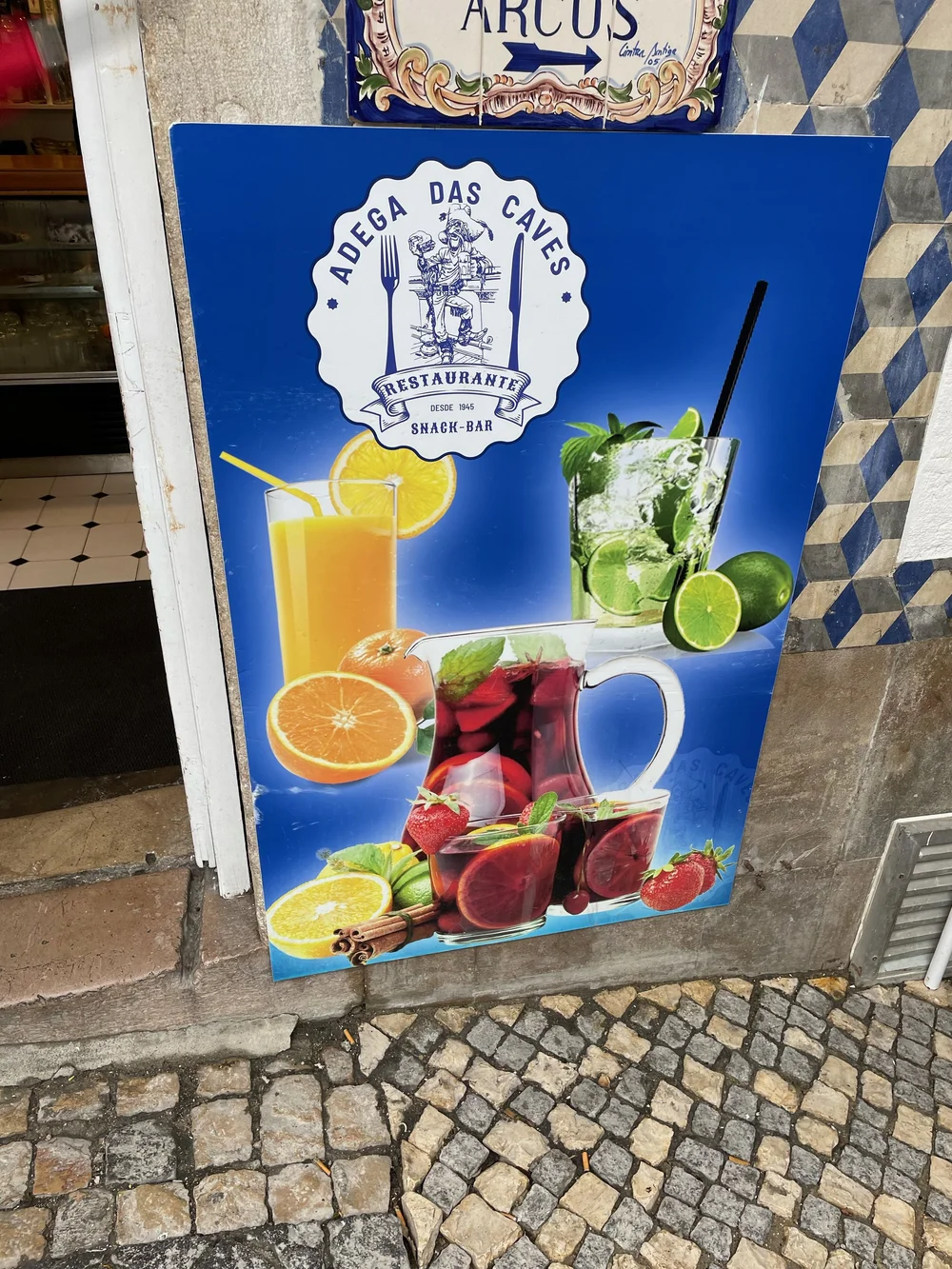
Dom Gualdim Pais founded the Castle of Tomar in 1160, then near the frontier with the Muslim states. Tomar is a small town 150 km/100 miles to the northwest of Sintra. It would have been close to the front lines between the new Portuguese nation and the Muslims who still controlled the south below the Targus River and its tributaries.
Figure 4. Castelo de Tomar above downtown Tomar, Portugal.
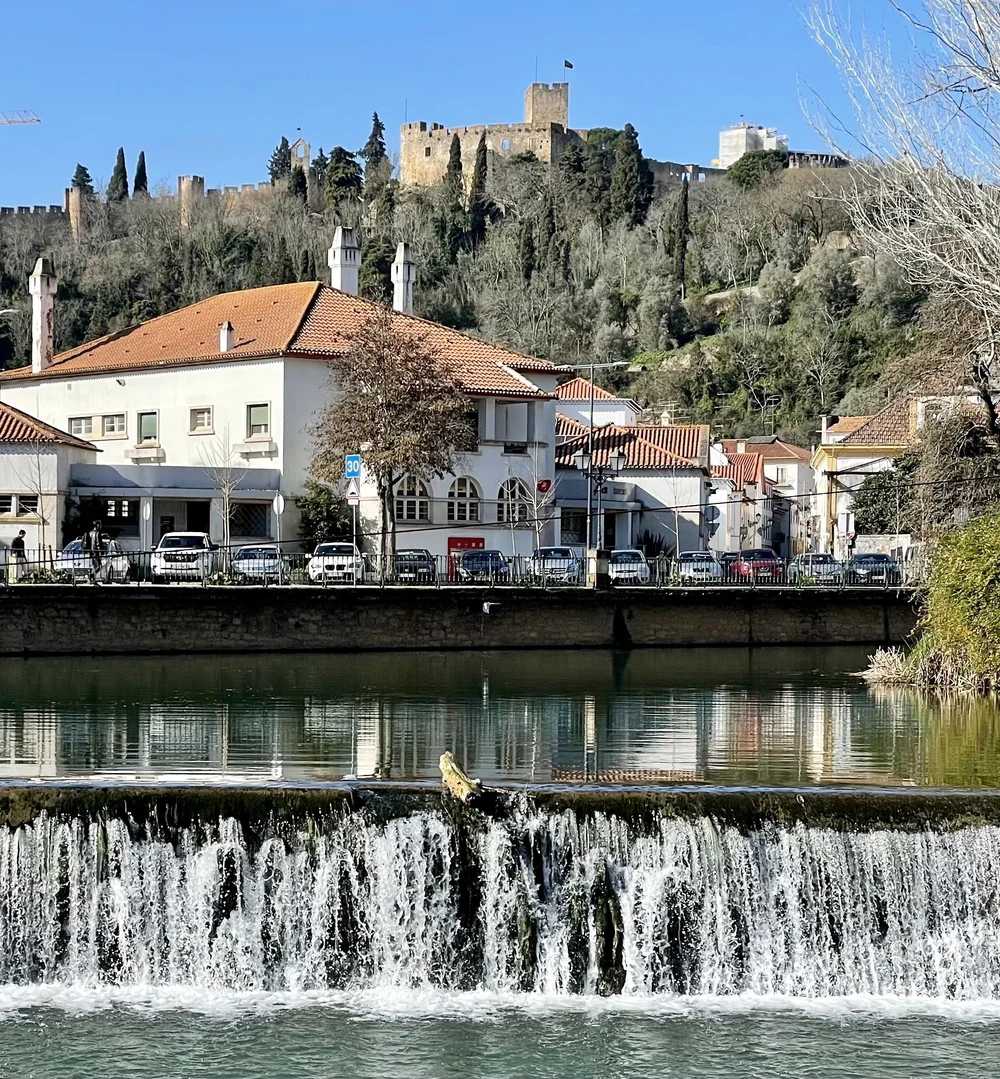
In 1190 Abu Yusuf Yaqub al-Mansur, an Almohad caliph, and his army attacked Tomar. However the knights and their 72-year-old leader, Gualdim Pais, kept them at bay.
When the Templars were disbanded in 1312, King Denis of Portugal provided them refuge and welcomed them in 1319. To insulate them from prosecution by the Kings of Europe and the Pope in Rome, their name was changed to the Military Order of Christ/Ordem Militar de Cristo.
At that time The Templars finished the church of Santa Maria de La Olivia on the east shore of the river. The Church is the resting place for many of the early Grand Masters. It has Templar iconography in its windows, carvings and statuary. There are rumours of a tunnel from the church to other sites in the area.
Figure 5. Church Santa Maria do Olival and tower in Tomar.
Figure 6. Inside the Church Santa Maria do Olival with a 5-pointed star above the alter.
Figure 7. Inside the Church Santa Maria do Olival with one large floor stone that is not like the others.
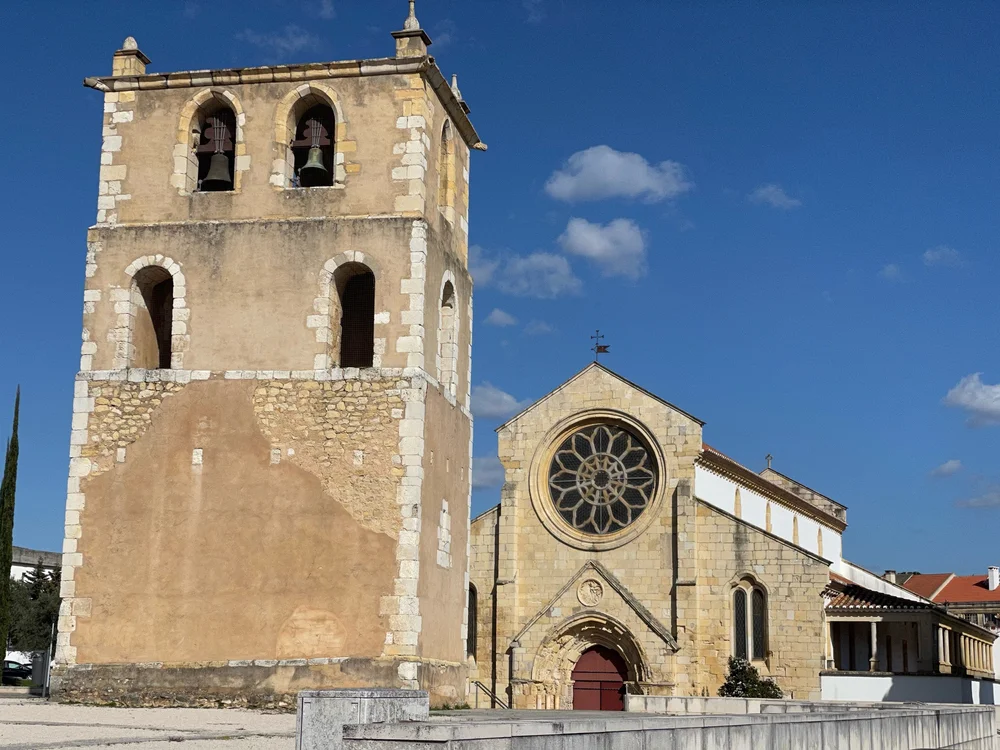
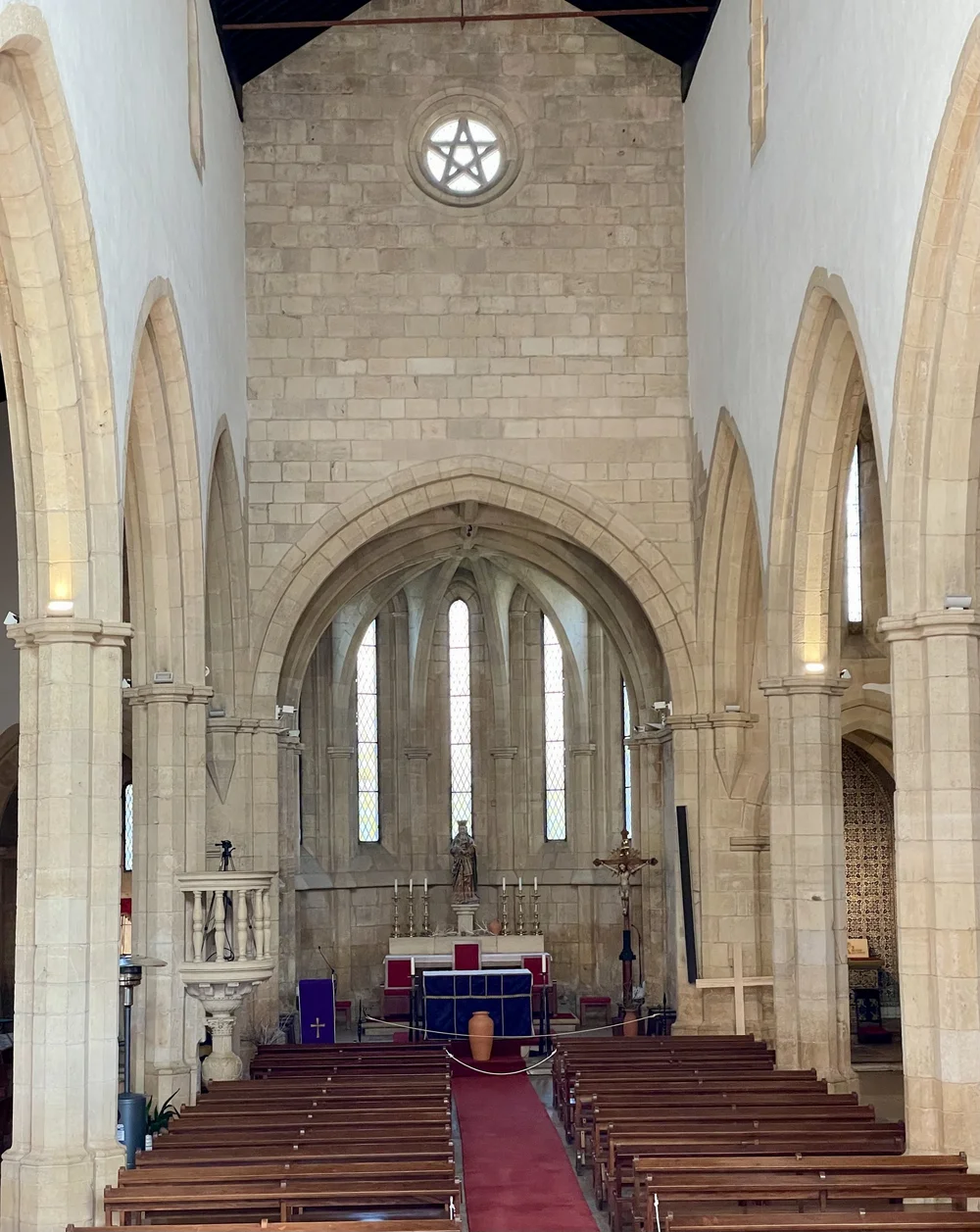
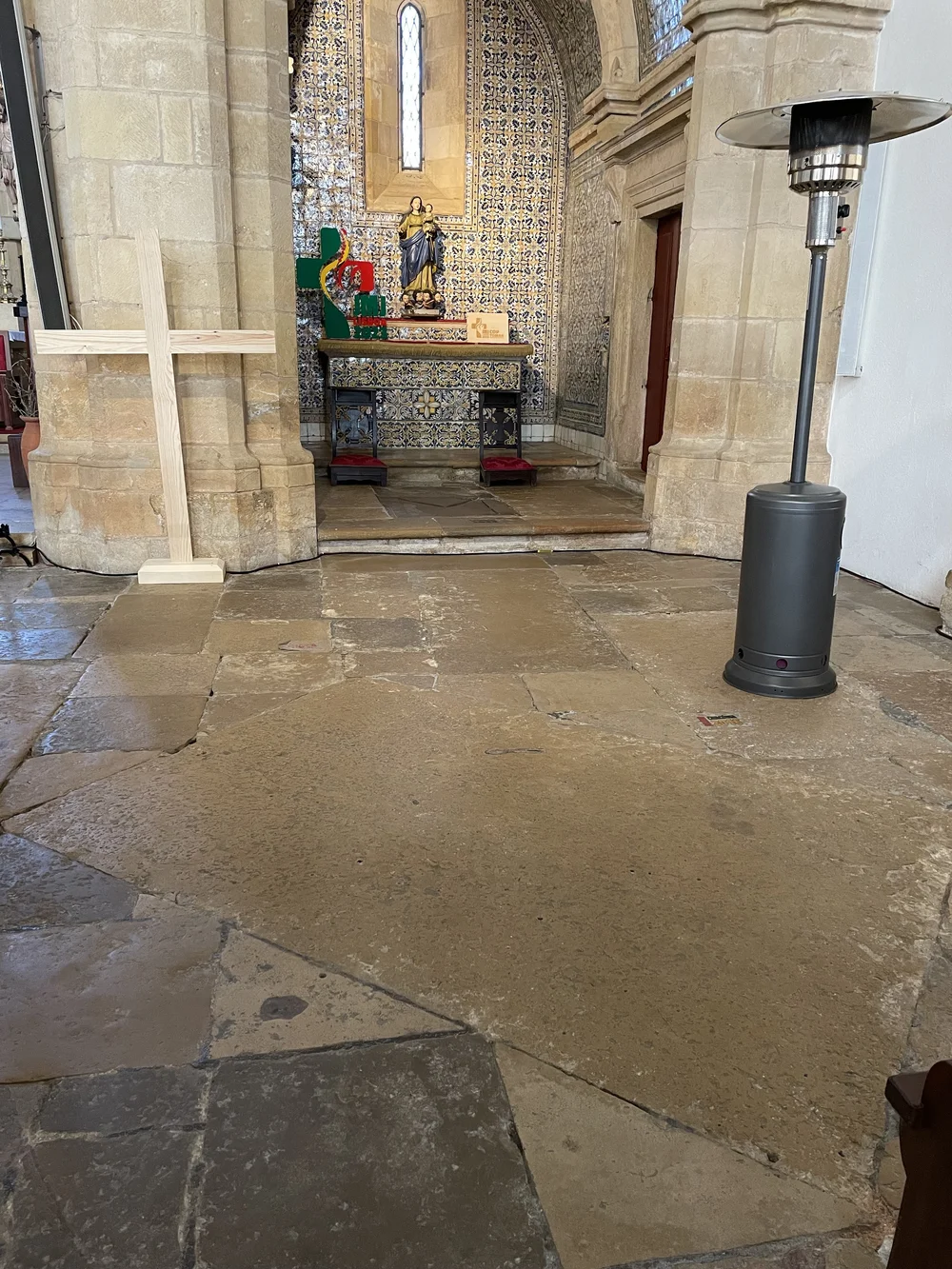
One possible destination of the tunnels is to the Castle and Convento de Christo on a high bluff on the western shore.
Figure 8. The present state of the Charola/Rotunda inside the Convent of Christ showing its incredible structure and the colourful result of the latter renovations.
This was the Templar headquarters. The large site contains walls, towers, gardens, cloisters, rooms, kitchens, cisterns etc., everything needed to sustain a significant population. One of the most fascinating structures on the site is the Charola or Rotunda. It was built in the second half of the 12th Century by the Knights Templar. The present state of the room displays a dizzying collection of colour and light. But this is the result of work carried out by King Manuel I starting in 1499. This later Catholic remodeling leaves it as it is today and makes it almost impossible to imagine it as the Knights Templar would have created.
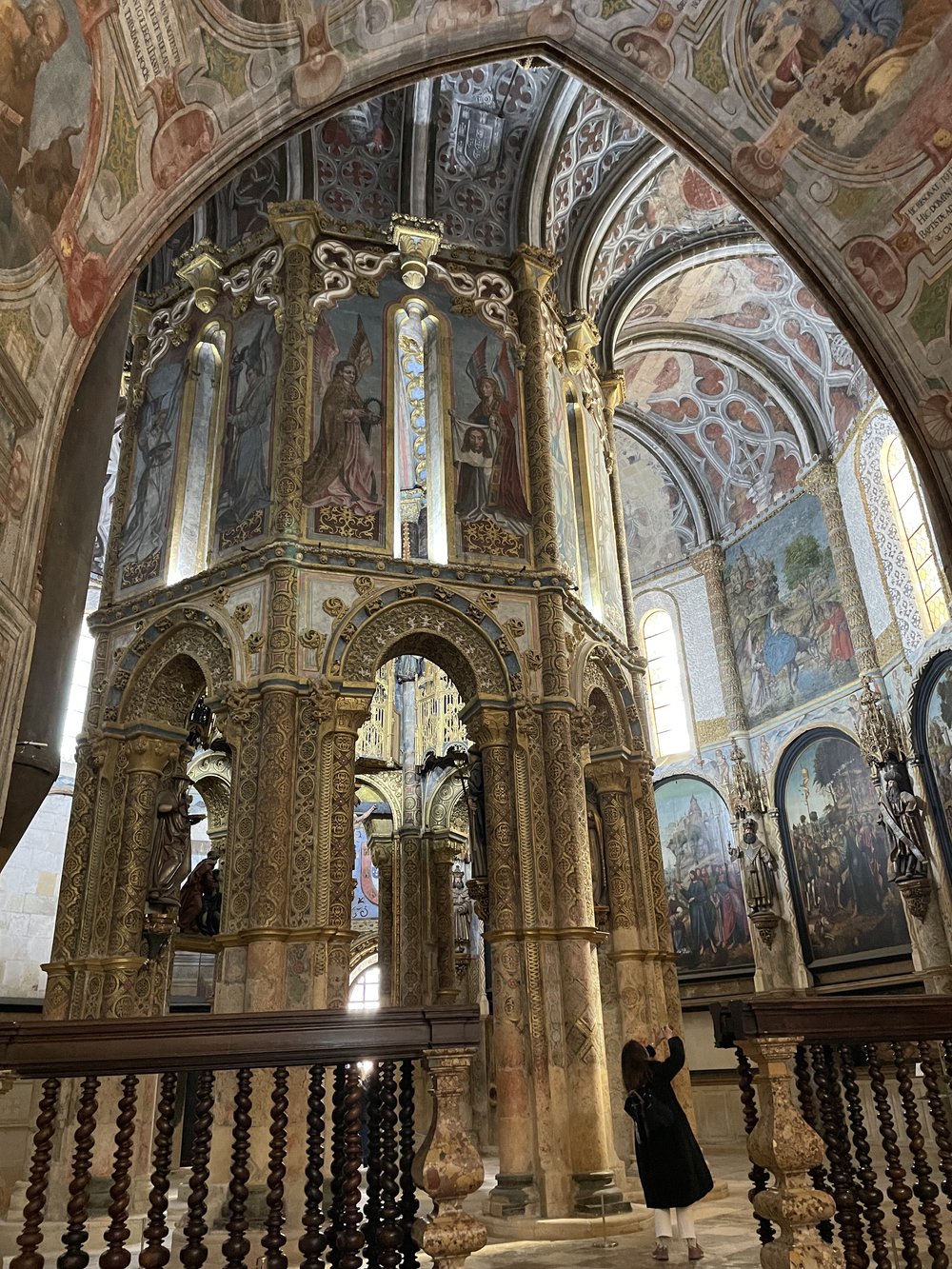
Originally the room was totally walled off. There were no windows and no decorations. It would have been totally dark in this massive space. Entrance to this Templar space was from the top, through some open spaces and down a staircase in the walls that ended in a doorway on the main level. It would have been built to be pitch black and difficult to access. This is an immense room. Deliberately built. A strong room for treasure would not need such an elegant structure. There is certainly no evidence of any Christian mass activity. What did they know and what did they do here? Just a mind blowing space.
Figure 9. My incredible guide Helena standing by the original door providing the only access to the interior from the stairs hidden in the walls of the Charola/Rotunda.
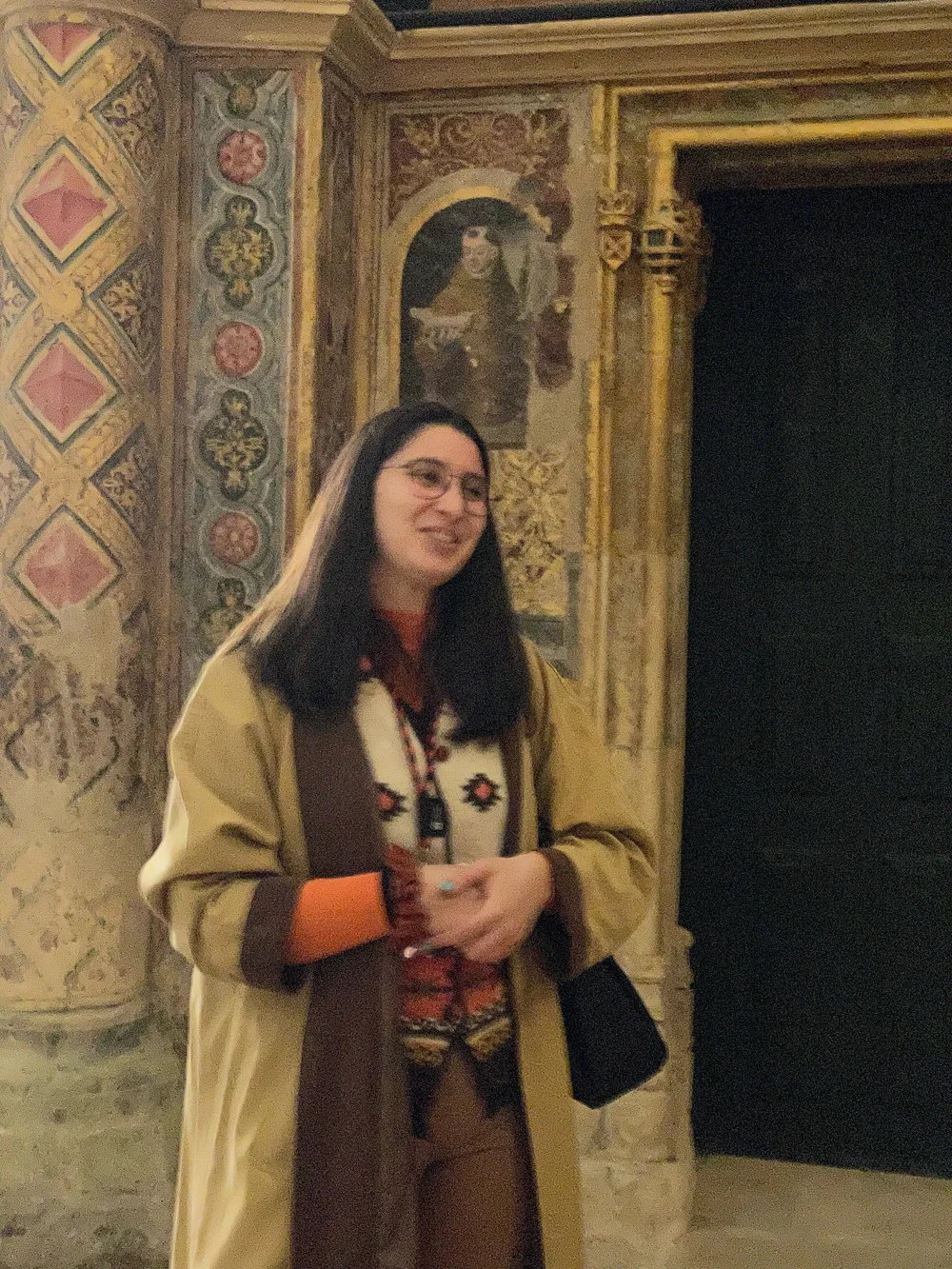
Returning to Sintra and more recent Templar construction, the Quinta da Regaleira, Sintra. The land holding of this 4 hectare site reaches back to the original Templar holdings in the 12th Century. Its present state represents major work carried out around the 1900’s. Although relatively new, it embodies many fascinating features related to the Templar imagery.
Figure 10. Quinta da Regaleira seen from the Moorish Castle, Sintra. The coastal plain and ocean can be seen in the distance.
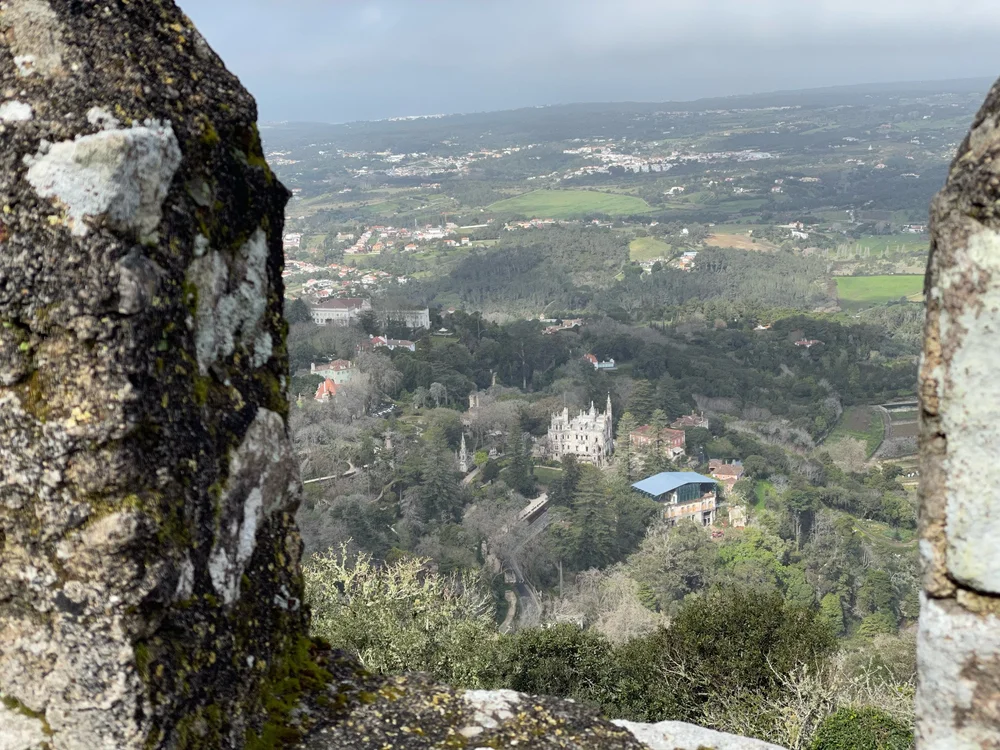
The most famous feature on the estate is the Initiation Well. Don’t be fooled by the “Imperfect Well”, that is just to mislead the uninformed. Entering the true well through a swinging rock “door” one enters a maze of stairs and caves. The stairs lead down, but there are several distracting side tunnels set to lead the visitor astray.
Figure 11. Looking down the Initiation Well at Quinta da Regaleira, Sintra.
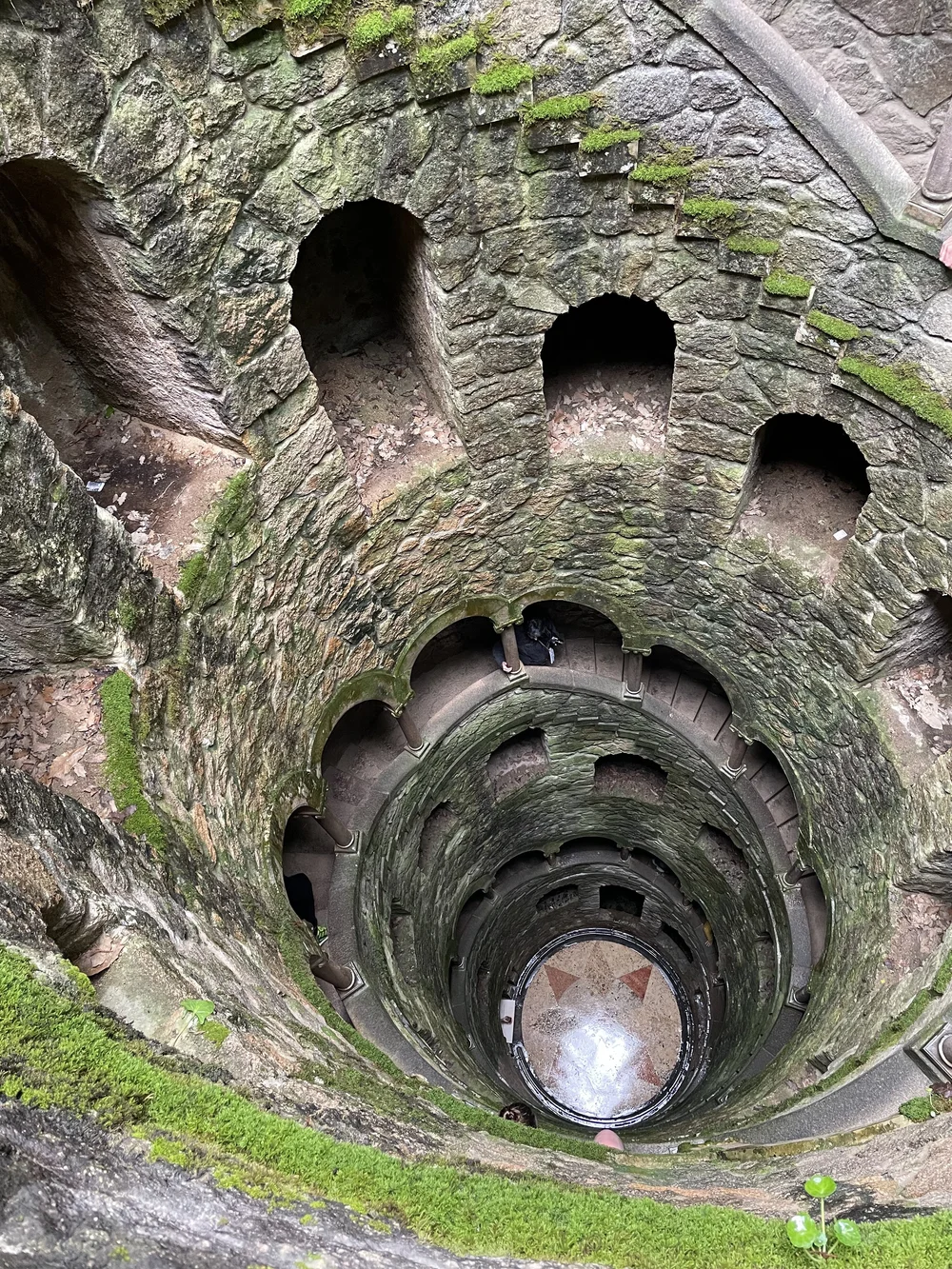
Much like an inverted tower, the end of the well is emblazoned with an eight point star and an image of the Templar Cross.
Figure 12. Stones at the bottom of the Initiation Well showing an 8-pointed star and the Templar Cross.
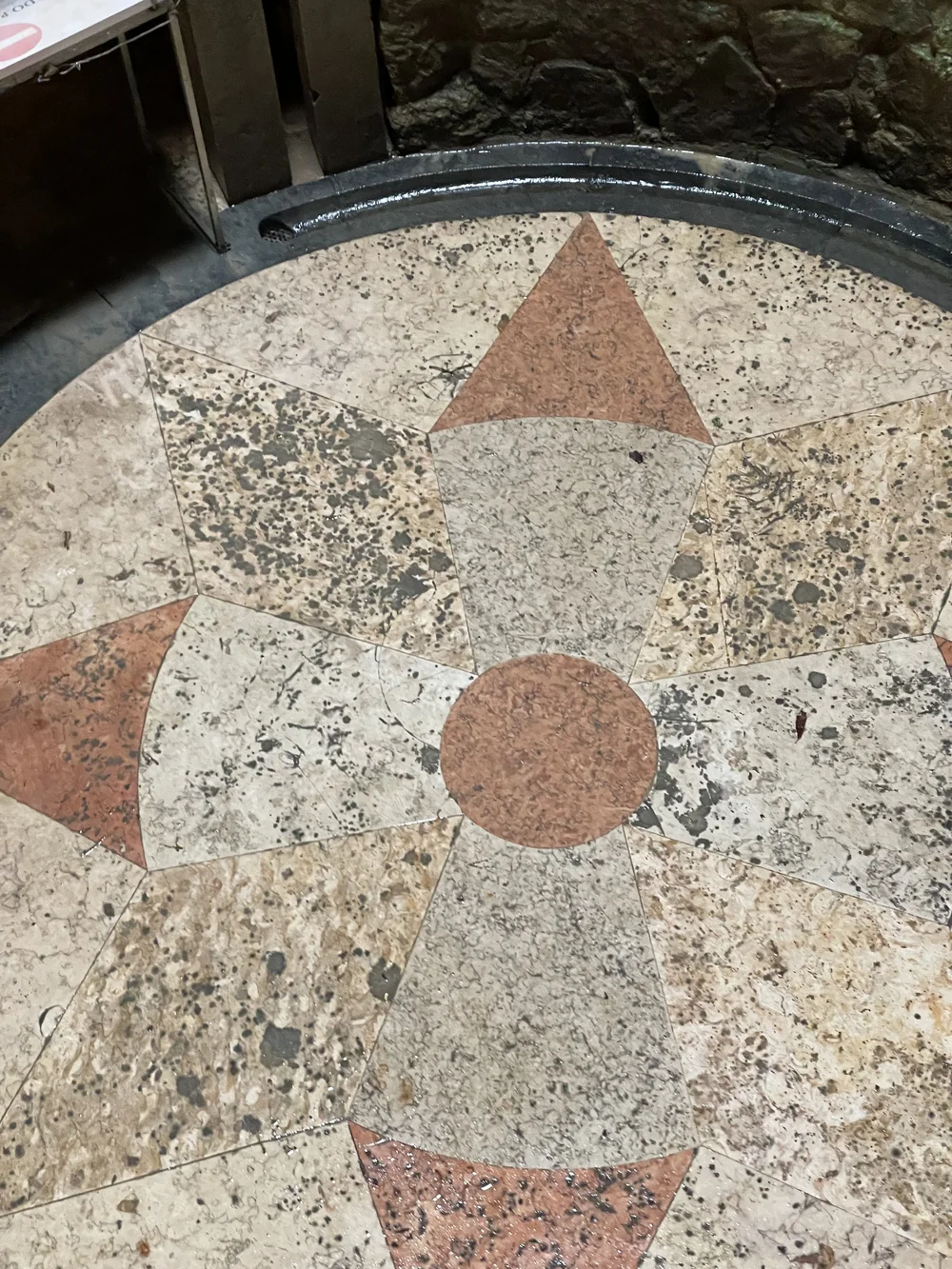
Once successfully at the bottom, the exit continues to be a challenge with misleading tunnels and a blocking waterfall. For the enlightened, it only requires a “walking on water” task to return to the fresh air.
Figure 13. My knowledgable and passionate guide, Francisco, showing the stepping stones/walk on water task at the exit of the Initiation Well.
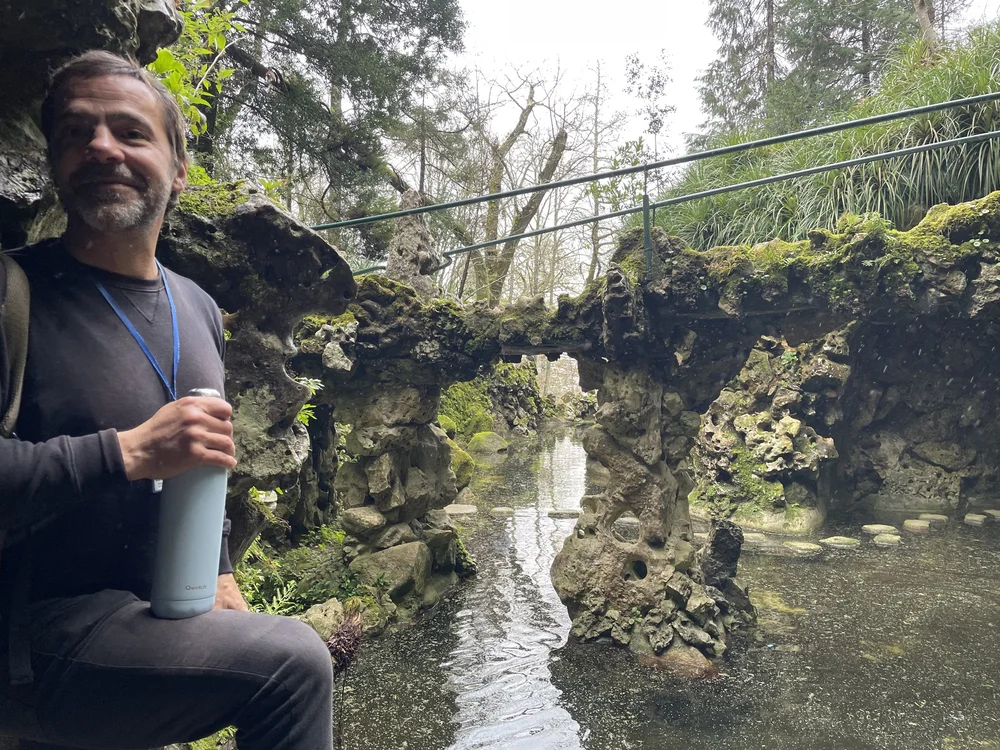
But this famous structure is one of many on the site - and not the only one that is cave-like in structure and experience. There is also the Labyrinth of Ibis. This feature can find its imagery back in the Ancient Egyptian god Thoth/Djeuti. He is the god of the moon, wisdom, writing, hieroglyphs, science, magic, art and judgment. He is the god who records the outcomes from the weighting of the heart - the final judgment of a person after death.
Figure 14. Egyptian scene of the weighing of the heart with Thoth standing on the right recording the decision (https://en.wikipedia.org/wiki/Ancient_Egyptian_afterlife_beliefs#Judgment_of_the_dead).

The Labyrinth of Ibis is a tangle of underground caves that challenge the visitor’s sense of direction and being.
Figure 15. Inside the Labyrinth of Ibis.
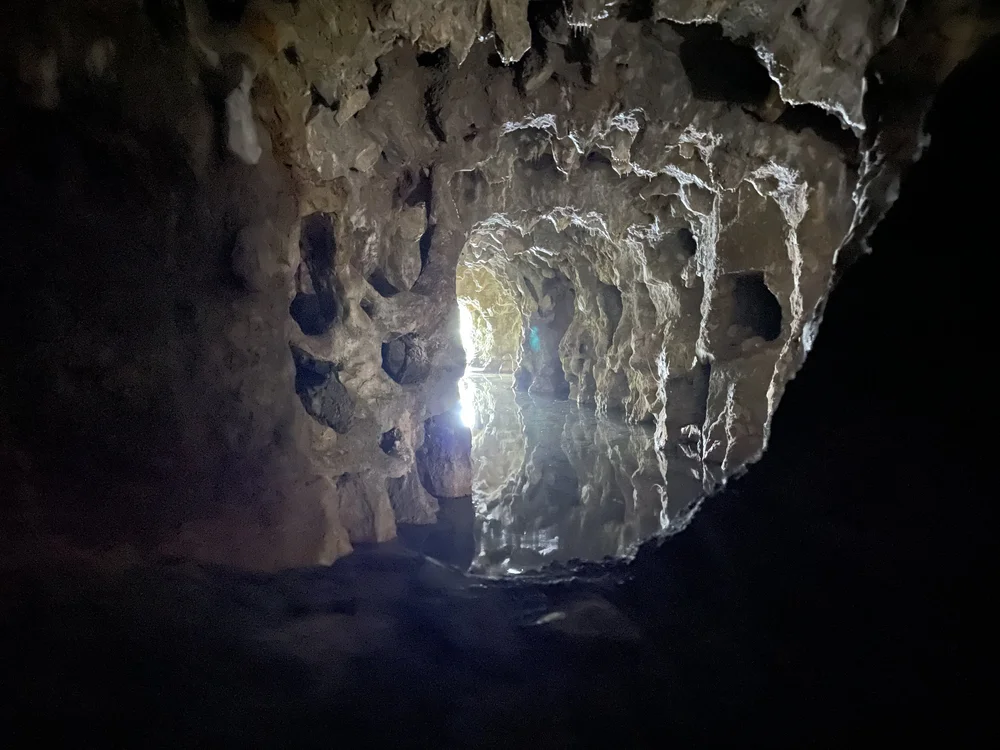
Figure 16. Inside the Labyrinth of Ibis.
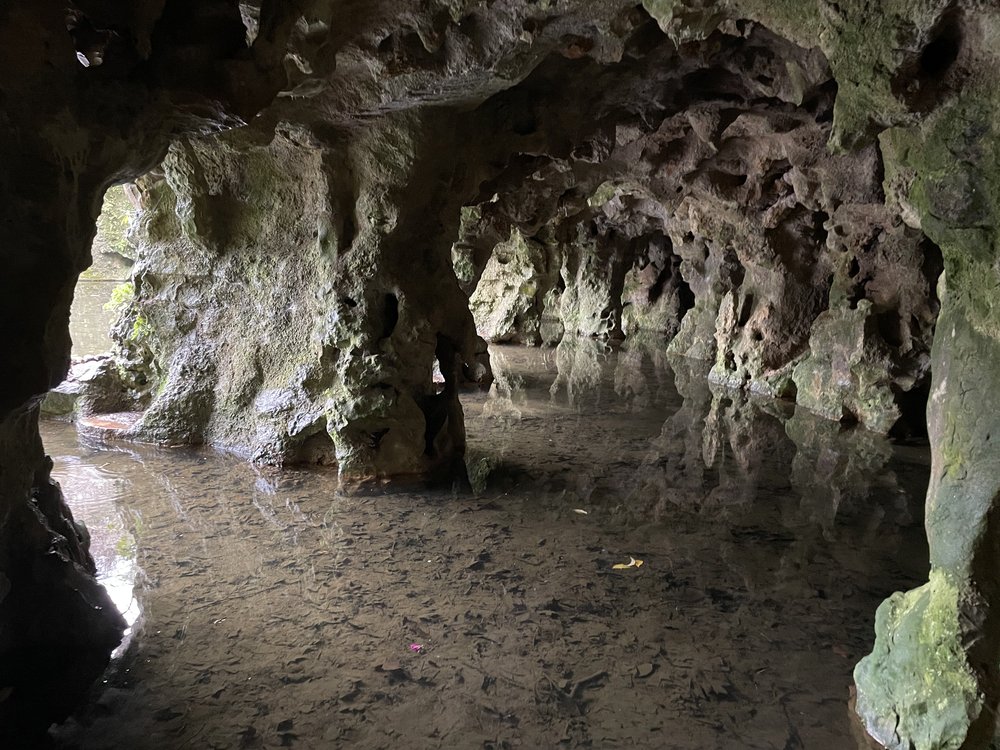
If one is able to make it through the cave maze, the reward is a view of the Shrine of Ibis.
Figure 17. The Shrine of Ibis at the exit of the Labyrinth.
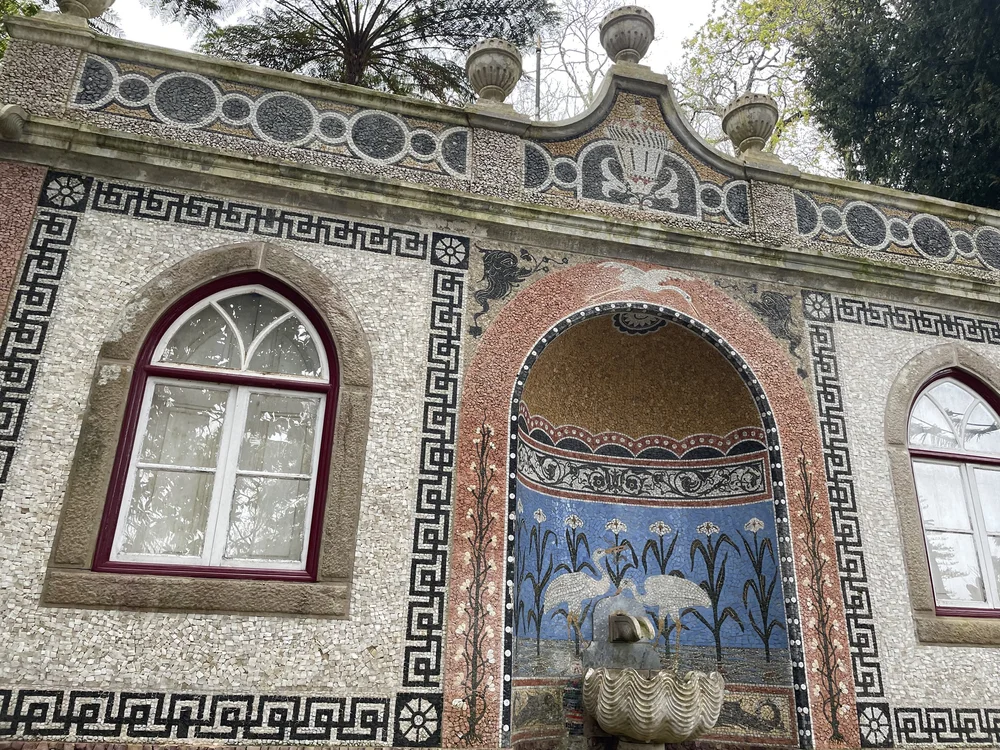
I finish here returning to Egypt with a photo from a number of years ago. In the Great Pyramid of Giza, in the King’s Chamber, in the sarcophagus, I lie contemplating that Jesus Christ was born in a cave and spent three days in a cave before being reborn. Were the Templars attempting the same thing?
Figure 18. The author inside the Great Pyramid of Giza.
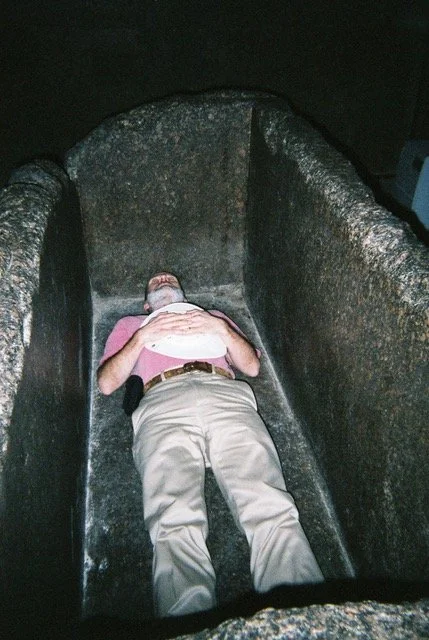
What's Your Reaction?










![The Usability Testing Playbook [Expert Tips & Sample Questions]](https://www.hubspot.com/hubfs/usability-testing-1-20250305-3357250.webp)




























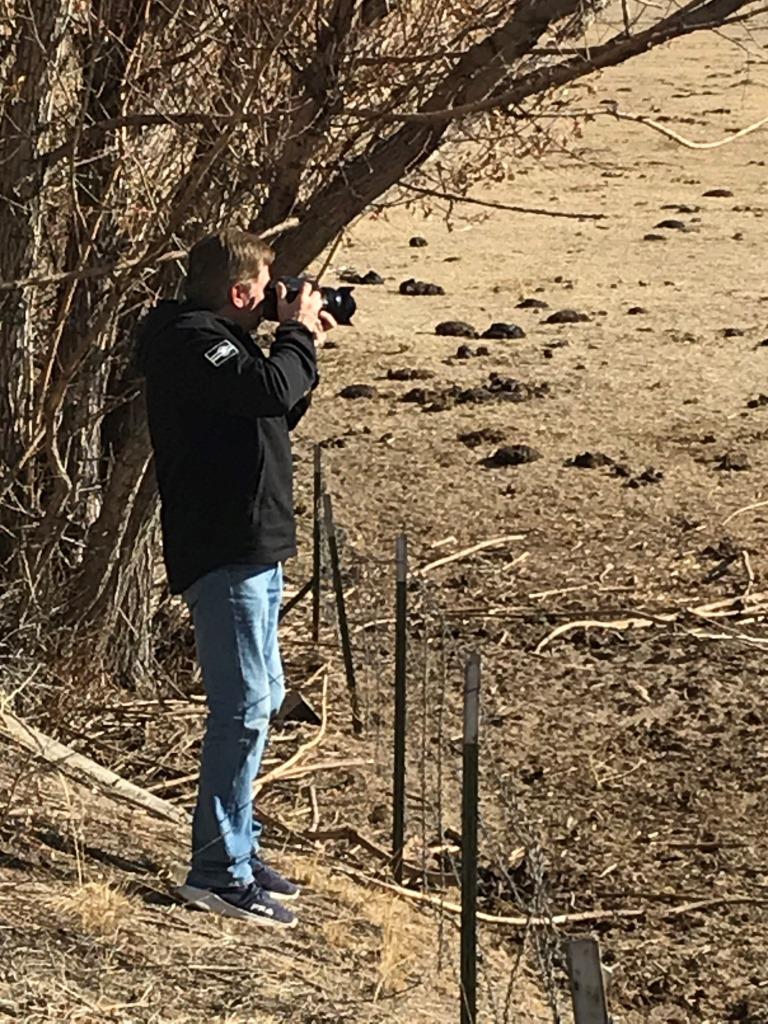

.png)































